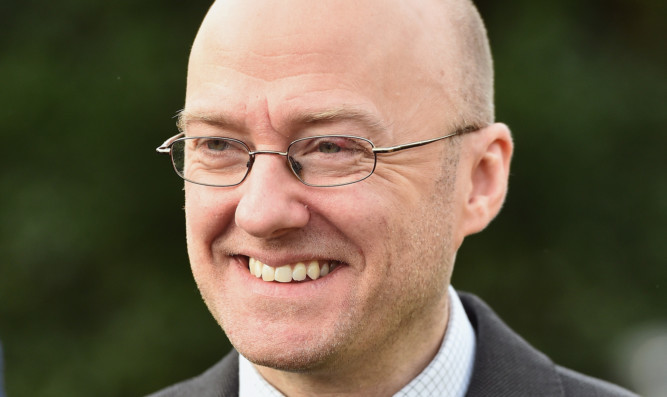The Greens have set out plans to introduce a new top rate of income tax of 60p for Scotland’s highest earners.
But the party pledged everyone earning £26,500 a year or more would get to keep more of their cash under its “progressive” income tax plans
It would scrap the current council tax system and introduce a residential property tax, where the amount households pay would be based on an annually updated value of what their home is worth.
Tax has become a key issue in the run up to May’s Holyrood election, with the Scottish Parliament getting powers over income tax rates and bands from April 2017 onwards.
Under the Scottish Green proposals, the current basic rate of income tax would be replaced with a rate of 18% for the first £7,500 of cash above the personal allowance – which is to rise to £11,000 in 2017-18.
A rate of 11% would be applied to income above £19,000 but higher earners would pay 43% tax on income over £43,000, while earnings above £150,000 would be taxed at 60%.
According to the Scottish Greens, their plans would raise £331 million additional funding to invest in public services than the SNP’s income tax plans – which would not implement the planned rise in the threshold for the 40p tax rate but would keep the top rate of income tax at 50p for 2017-18 at least.
While the Greens said an MSP earning £60,685 would pay £938 a year more in tax, they said someone on the median full time salary of £27,710 would pay just £24 more a year.
Scottish Green co-convener and Glasgow candidate Patrick Harvie said: “Public services such as schools and social care and community facilities have been hit hard by cuts from the SNP Government on top of eight years of a regressive council tax freeze.
“Despite arguing for control over income tax, the SNP have failed to seize the opportunity to create a more progressive system to tackle inequality. There is an urgent need and the Scottish Greens are responding to it.
“People on generous salaries, such as MSPs, deserve to pay a fairer share to protect and improve the public services we all rely on. Someone earning less than the average and struggling with the cost of living deserves to keep more of what they earn.”
He added: “Scottish Greens believe Scotland can be a fairer country but we need a bolder Holyrood with more Green voices to press the case. With the SNP’s reluctance to act and Labour’s limited offering, our income tax proposals will find favour with those who see the chance to create a more equal Scotland.”
The proposed residential property tax is similar to the system currently in place in Denmark, with the Greens pledging it would be introduced over a five-year transition period with options to reduce or defer payment, depending on circumstances.
Green local government spokesman and Lothian candidate Andy Wightman said: “Property owners and tenants are being left in a ridiculous situation by the SNP with a tax based on values from quarter of a century ago. Most people are paying the wrong amount. A wide variety of experts in this field have shown how a property tax can be made proportionate and progressive, and that is what the Scottish Greens are proposing.”
